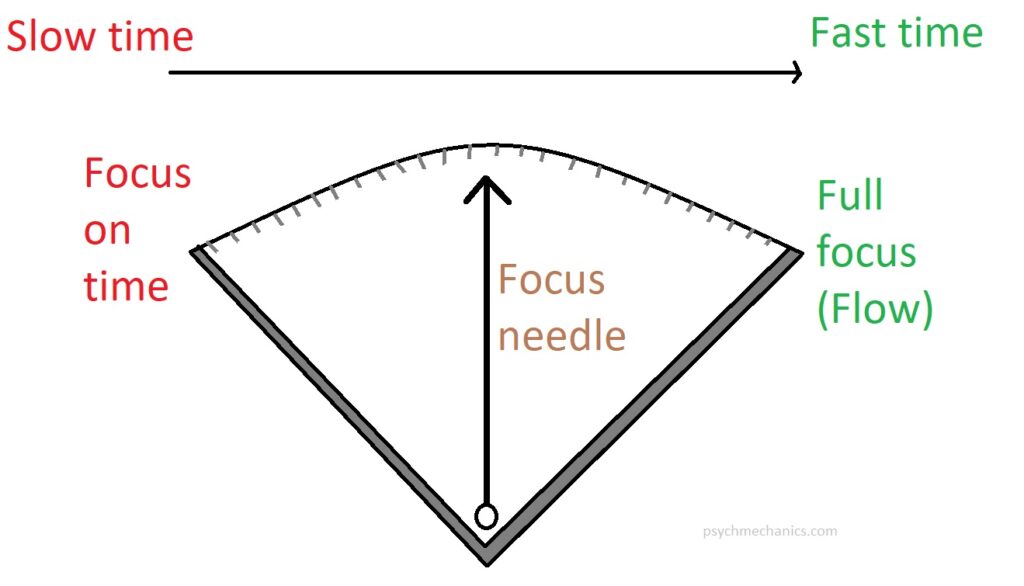You’ve probably heard the saying, “If you love what you do, you don’t have to work a day in your life”. I’ve been loving what I do for a few years now and can attest to its truth.
It’s a weird mental state to be in, frankly. You work a lot, and that work disappears into thin air- poof! You wonder where all your work went. As a result, you sometimes feel guilty for not doing enough. Because work doesn’t feel like work, it’s confusing.

Confusing as it may be, I can imagine it’s way better than being stuck in a soul-crushing, mind-numbing job. Work that doesn’t engage you at all and sucks the life force out of you.
What makes this type of work different from the work you love?
It all boils down to the level of engagement. Nothing more. You’re more engaged in the work you find interesting and disengaged from the work you don’t care for.
What happens when you disengage from the work you don’t care for?
Well, your mind has to engage with something. It has to focus on something. So, it focuses on the passage of time. That’s when work takes ages to complete, the clock seems to run slower, and your day drags on.
The focus needle
To visualize what we’ve discussed so far, I want you to imagine that you have a focus needle in your mind. When you’re fully engaged with your work, this needle moves to the extreme right.
When you’re disengaged and paying more attention to the passage of time, the needle moves to the extreme left.

What can you do to shift the focus needle from left to right?
Two things:
- Do work that you find engaging
- Increase engagement in your current work
The first option may require quitting your job, and I know that’s not an option for many. So, we’ll focus on making your current work more engaging.
Negative emotions move the needle to the left
If you think about it, soul-crushing work, per se, can’t harm you. It has nothing against you. It’s just work, after all. What bothers you is how it makes you feel.
In truth, the real issues are negative emotions and moods such as boredom, exhaustion, overwhelm, stress, burnout, and anxiety usually caused by mind-numbing work.
So, to increase your engagement level in your present work, half the battle is combating these emotional states. These emotional states are designed to shift your focus from whatever you’re doing to them.
We feel a negative emotion when we’re under threat, and the mind can’t let us focus on work if it is under threat. This is so powerful that even if you love what you do, you find that when you’re under the grip of a negative mood, you just can’t focus.
Every minute feels like an eternity, and you say you had a ‘long’ day.
How to make work go by faster
Let’s discuss some things you can do to increase engagement in your current work, no matter how soul-crushing it may be:
1. Planning your work
When you plan what you’re going to do, it rids you of a lot of decision-making. Decision-making is not a pleasant mental state, and it can easily paralyze you. When you take a long time to make decisions, you feel time is moving slowly, and your productivity suffers.
When you plan out your work, you can get moving fast.
2. Time-blocking
Time-blocking is dividing your day into time segments that you can devote to specific tasks. Time-blocking is insanely useful as it helps you focus. It lets you schedule tasks instead of having a simple to-do list without time attached to it.
Not only does this help with productivity because what doesn’t get scheduled doesn’t get done, but it also makes work easier to tackle.
Instead of seeing work as this huge mountain you got to climb for eight hours straight, you give yourself small two-hour hills to climb.
When work becomes less daunting, you feel more confident and eliminate anxiety. Removing negative emotions like anxiety is excellent for increasing engagement levels.
3. Get into flow
Flow is a state of mind where you’re so engaged with what you’re doing time seems to fly by. You’re so immersed in what you’re doing you forget everything else. It’s a joyful state that’s easy to achieve when you love- or at least like- what you’re doing.
But you don’t have to like what you’re doing to get into flow.
To get into flow, all you need to do is make your work challenging. Not so challenging that you get overwhelmed and feel anxious but challenging enough to increase engagement.
4. Engage with something else
If you don’t find your work engaging, you can still raise your baseline levels of engagement by engaging with something else. For example, you can listen to music or podcasts while doing dull, repetitive work.
This can only work if your work isn’t too cognitively demanding and you have to work more or less like a machine. Examples of this type of work include doing repetitive work at a:
- factory
- warehouse
- restaurant
- call center
- grocery store
When work becomes repetitive, your engagement level drops. The needle moves to the left, and you focus more on the passage of time.
Putting on something in the background raises your engagement level enough to not simply focus on the passage of time but not enough to distract you from the task at hand.
5. Gamify your work
If you can turn your tedious work into a game, that’d be awesome. We all love games as they give us instant rewards and whet our competitive spirits.
If you and a coworker each have a boring task to finish, you could turn it into a game by competing with each other.
“Let’s see who can finish this task first.”
“Let’s see how many e-mails we can send in an hour.”
If you have no one to compete with, you could compete with yourself. I compete with myself by looking at how I did last month compared to how I did in the current month.
Games are fun. Numbers are fun.
6. Make time for rest
If you work for many hours continuously, burnout is inevitable. And burnout is a negative state we’re trying to avoid because it makes time go slower. This applies even to the work you love. Do it too much, and you’ll start to hate it.
This is why you must take the time to rest. Make it a part of your routine.
Not only does rest and rejuvenation prevent burnout, but it also mixes up your day. It makes your day more colorful. It gives you time to take care of yourself. You can exercise, take a walk, engage in your favorite hobby, and the like.
If all you do is work, don’t be surprised if life becomes slow and dull.
7. Sleep well
What has sleep got to do with making your work more engaging?
A lot.
Poor sleep can put you in a bad mood throughout the day. It also impairs your cognitive abilities. If your work is cognitively demanding, you need proper rest.
8. Eliminate distractions
Distractions disengage you from the work you’re doing. The more distracted you are while you work, the more your focus needle moves to the left.
When you eliminate distractions, you can immerse yourself more deeply into your work. Even if you think your job sucks, you may stumble on an aspect of it that you find interesting.
But that can’t happen unless you do your work with complete focus and thoroughly, giving all of yourself to it.
9. Look forward to something pleasant
If you have something exciting to do after work, this can motivate you to finish the work as soon as possible.
When you’re thinking about something exciting, you’re more engaged. It increases your baseline level of engagement.
However, you can’t be too excited. If your excitement level is too high, you can start becoming anxious and impatient. You can’t wait for work to be over.
Now, the future consumes all your attention, and you can’t focus on the present work.
10. Shelf issues as they arise
This is a powerful technique to maintain high engagement levels at work. If an issue arises while working, you can easily get distracted.
A problem is a threat and being under threat generates negative emotions. You feel compelled to tackle the danger and rid yourself of the negative emotions.
You leave what you were doing and get side-tracked. This has happened to me so many times. It’s been my major productivity struggle.
The best way to deal with such situations is to ‘shelf your issues’.
The idea is you don’t have to deal with every issue that arises head-on. Most problems are not urgent, but they make you feel they are. If they’re unaddressed, the world will not end.
The problem is: When you’re under the grip of negative emotions, it’s hard to convince your mind that the issue isn’t urgent. The mind only cares about emotions.
Shelving the issue means acknowledging it and planning to tackle it later.
For example, if you put the task on your to-do list, your mind can rest assured that the problem will be taken care of. And you can continue working on what you were working on.
